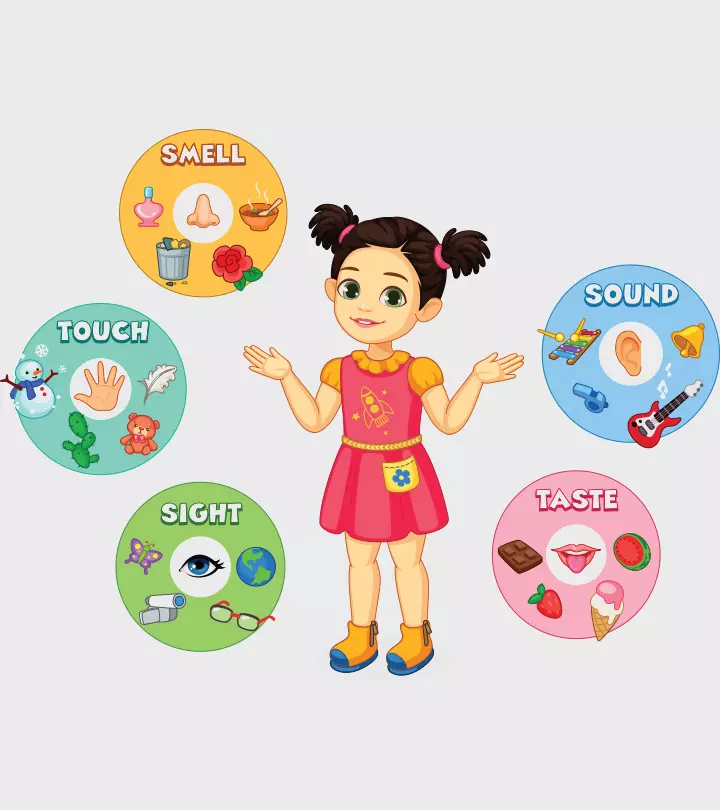
Image: Momjunction Design Team
Is your little one drawing on the walls of your home? So, instead of letting them mess up your wall, why don’t you encourage them to do that on paper? To help you with that, we have come up with a tutorial on how to draw a rose for kids through easy steps. Painting and drawing keep your kid engaged and help them hone their hand-eye coordination and motor skills. So, let your kid start their art stint with hand-drawn roses under your guidance. All you need is drawing paper, colored pencils, and non-toxic crayons. For drawing roses, you will need:

- Pencils
- Drawing paper
- Color pencils
- Non-toxic crayons
- Eraser
- Sharpener
 Point to consider
Point to considerKey Pointers
- Beautiful roses often mesmerize children; they may want to try drawing one themselves.
- This tutorial explains how to draw a rose using a few simple strokes for children.
- Provide an actual rose for reference to help your child understand the parts of the flower while drawing.
- Guide your child to color the drawing or use shading techniques to enhance its appeal.
How To Draw A Rose? – A Step-By-Step Tutorial
Here is an easy way to draw a rose. It’s one of the easiest drawing ideas for kids.
Step 1: To begin rose drawing for kids, ask them to doodle a teardrop egg, which is slightly angled to the right.

Step 2: As shown in the picture, draw a half U letter, starting from the left, and connect it to the bottom of the teardrop egg. Make the U a little curvy at the top.

Step 3: Connect the beginning of the U to the teardrop.

Step 4: Add two small lines at the top to appear like the inner petals of the rose flower.
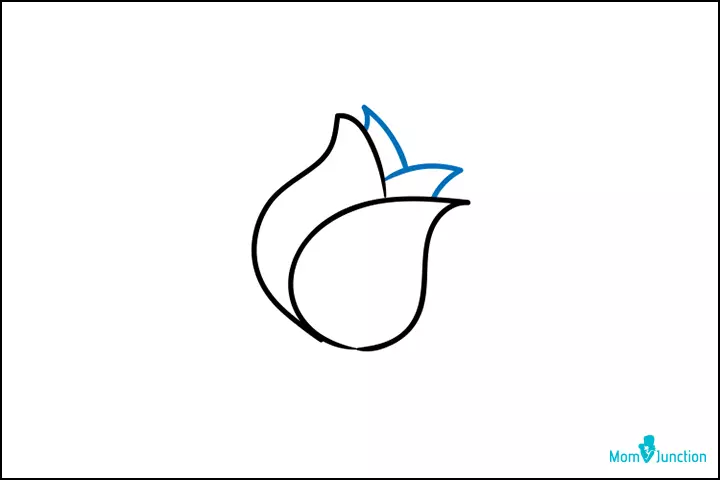
Step 5: Now draw two more small petals at the top of the rosebud.
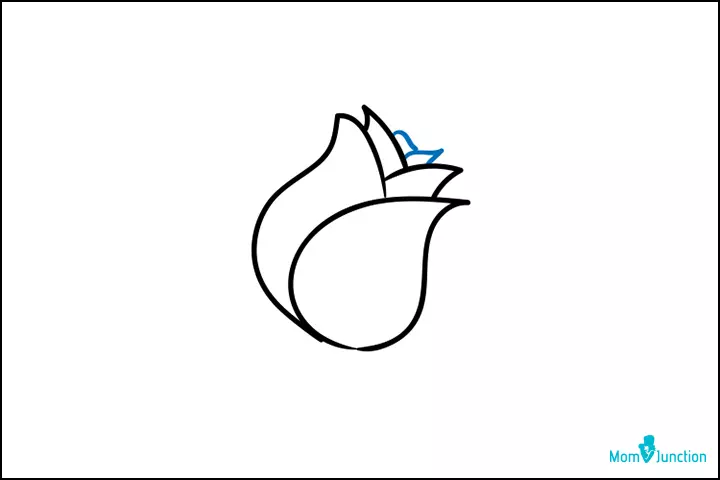
Step 6: Drawing the simple rose is incomplete without the stem and its leaves. In this step, draw two vertical lines parallel to each other at the bottom of the rose flower. Make sure the lines are drawn freehand because they don’t have to be perfect. However, ensure that they are in the right proportion as compared to the flower.
 Point to consider
Point to consider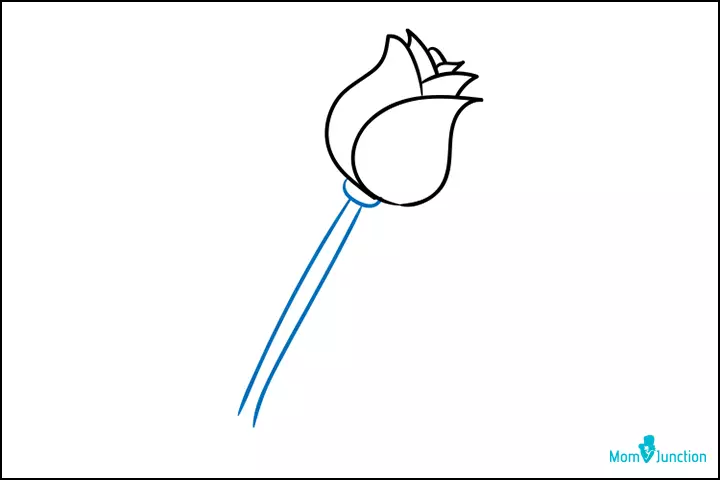
Step 7: Sketch the leaves of the rose flower on both sides of the stem. You can also add thorns to the stem.

Step 8: Your rose flower drawing is now ready. Bring the flower to life by coloring the rose in red or color of your choice, as roses are available in plenty of shades. You can use shading techniques to make it look more real. Remember to color the stem and leaves in green.
Sometimes, drawing just the features of actual roses can help your child draw better. Myungja Anna Koh, a Korean-American artist and a mother of a five-year-old girl, says ”I have been drawing, but the difficulty is when I have to teach my child how to draw because it is challenging to express intricate and detailed parts with children’s small hands… So I tried to summarize realistic roses with only the features so that young children could draw them. When I draw like this and show it to my child, the child does not become frustrated or annoyed, and she draws hard (i).”
Based on the child’s age and skills, you may help the children accordingly.

Frequently Asked Questions
1. How does learning to draw roses help children develop their artistic skills?
Learning to draw roses could form the basis for drawing other complex flowers. It can also improve a child’s artistic skills, helping them draw leaves, plants, and foliage better.
2. What are some common mistakes children make when drawing roses?
Children often tend to apply too much pressure on the pencil when drawing a rose. The outline of a rose should be well-defined but not too thick or dark, as it will take away the sophisticated looks of the flower.
3. Why are drawing and painting important in child development?
Drawing and painting help children communicate their emotions and ideas. It helps to understand how a child perceives the world around them. Furthermore, children build their observational skills while drawing. The final piece gives them confidence which in turn raises their self-esteem. It may also make their mind relax.
4. How does drawing help cognitive development?
Drawing promotes the development of perceptual-cognitive skills. It enhances the person’s ability to perceive, understand and analyze visual data. Drawing also boosts concentration, problem-solving, and spatial reasoning and gives knowledge of proportion (1).
5. How long does it take to draw a rose for kids?
It depends on the child’s age and their familiarity with drawing lines and circles. Drawing a rose for kids may take between 30 minutes to one hour. But this is not a standard time and can vary considerably.
6. What are some fun and thoughtful ways to use the rose drawing?
After your child has finished drawing the rose, you can display it in their room as a poster or on the fridge for everyone to admire. You can also paste it onto a greeting card or in a scrapbook with their other doodles and sketches.
Children are often fascinated by flowers and are especially eager to learn how to draw a simple rose. Help your child follow this simple step-by-step tutorial and see the pretty flower bloom through the creative hands of your little one. Your child will definitely love the experience of drawing a rose, and witnessing their creativity will make your day.
Illustration: How To Draw A Rose? A Step-By-Step Tutorial For Kids
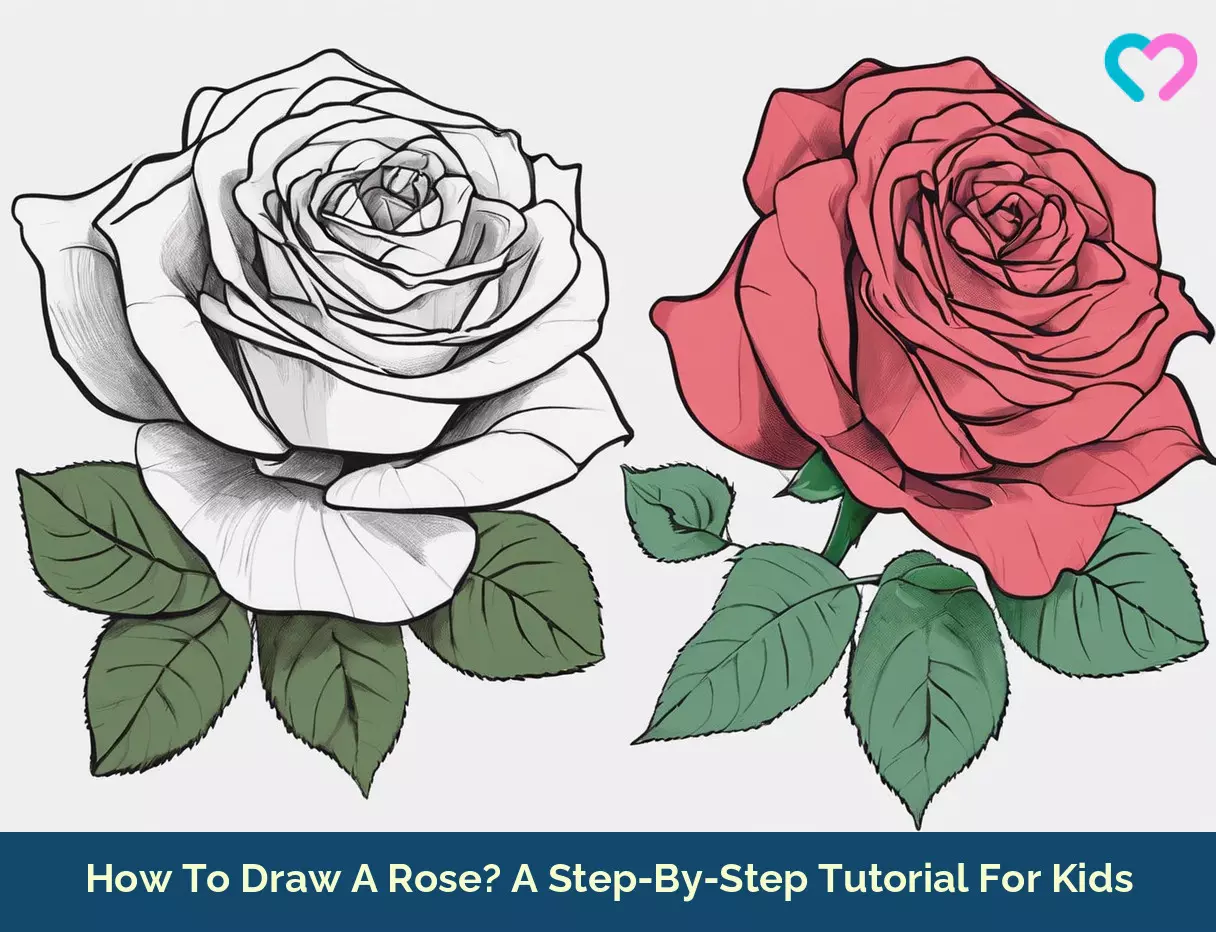
Image: Stable Diffusion/MomJunction Design Team
Infographic: Easy Steps For Drawing Rose For Children
Whether your child wants to learn to draw a rose for a greeting card or as a flower activity, drawing a rose can be a little more difficult than other flowers. In this infographic, we’ve provided a stepwise tutorial to make a beautiful rose. Following these steps will help your child to bring out their artistic skills to draw a beautiful rose.
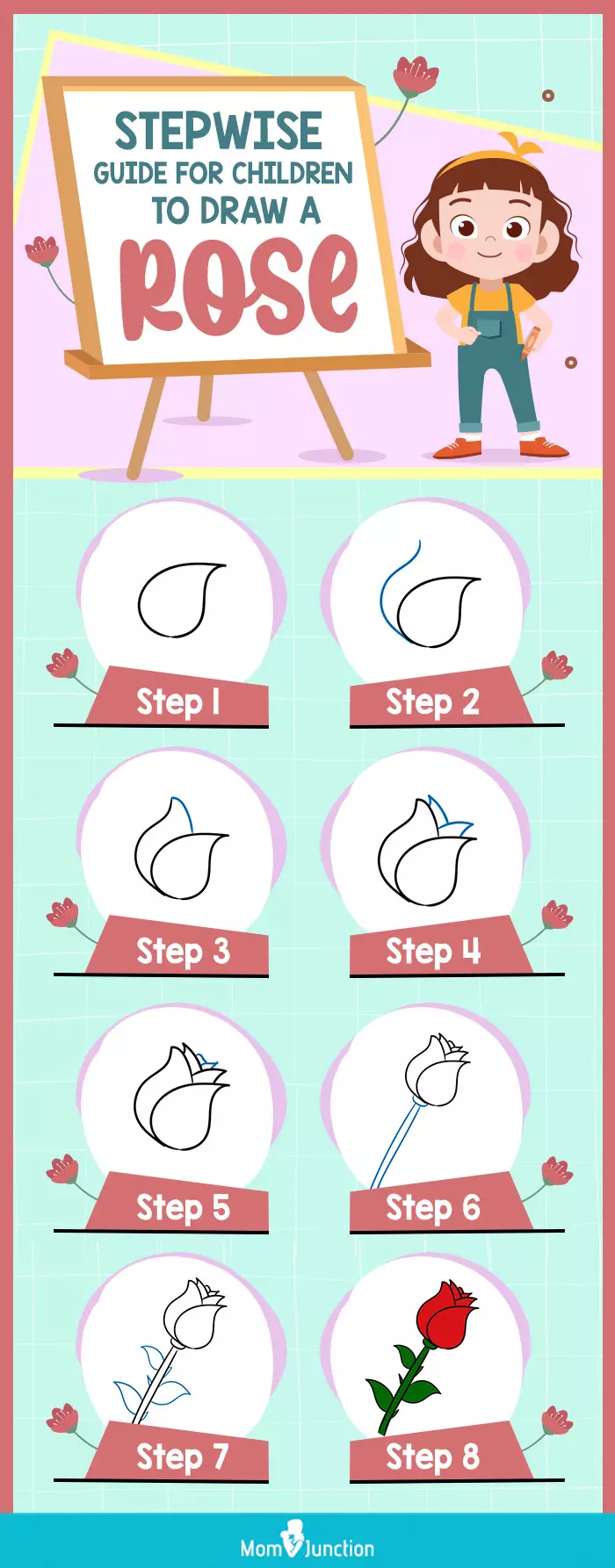
Illustration: Momjunction Design Team
Learn how to draw a beautiful rose with this easy art tutorial for beginners! Follow along step-by-step and create your stunning rose drawing.
Personal Experience: Source
MomJunction articles include first-hand experiences to provide you with better insights through real-life narratives. Here are the sources of personal accounts referenced in this article.
i. How to draw a rose for kids;https://www.annakoh.com/blog/how-to-draw-a-rose-for-kids
References
- Drawing for Perceptual-Cognitive Development;
https://ce.fresno.edu/educator-courses/art-906/#:~:text=Drawing%2C%20like%20reading%20or%20writing
Community Experiences
Join the conversation and become a part of our nurturing community! Share your stories, experiences, and insights to connect with fellow parents.
Read full bio of Erin DeCarlo
Read full bio of Harshita Makvana
Read full bio of Deepa Thomas












